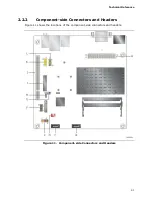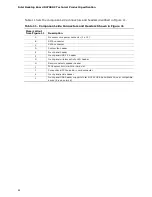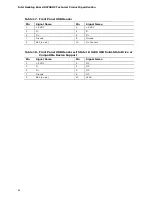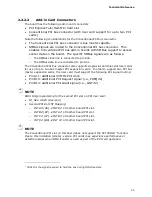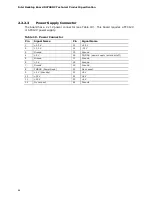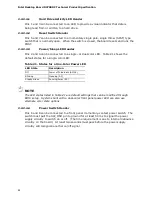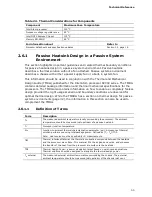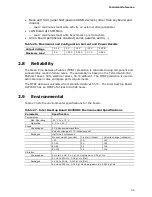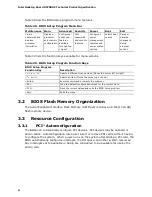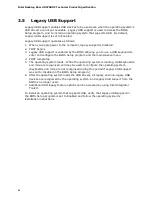
Technical Reference
55
Table 24. Thermal Considerations for Components
Component
Maximum Case Temperature
Intel Atom processor
100
o
C
Processor voltage regulator area
85
o
C
Intel NM10 Express Chipset
113
o
C
Memory SO-DIMM
85
o
C
For information about
Refer to
Processor datasheets and specification updates
Section 1.2, page 16
2.6.1
Passive Heatsink Design in a Passive System
Environment
This section highlights important guidelines and related thermal boundary conditions
for passive heatsink design in a passive system environment. Passive heatsink
describes a thermal solution without a fan attached. Passive system environment
describes a chassis with either a power supply fan or a built-in system fan.
This information should be used in conjunction with the Thermal and Mechanical
Design Guide (TMDG) published for the Intel Atom processor D2000 series. The TMDG
contains detailed package information and thermal mechanical specifications for the
processors. The TMDG also contains information on how to enable a completely fanless
design provided the right usage scenario and boundary conditions are observed for
optimal thermal design. While the TMSDG has a section on thermal design for passive
system environments (page 32), the information in this section can also be used to
complement the TMDG.
2.6.1.1
Definition of Terms
Term
Description
T
A
The measured ambient temperature locally surrounding the processor. The ambient
temperature should be measured just upstream of a passive heatsink.
T
J
Processor junction temperature.
Ψ
JA
Junction-to-ambient thermal characterization parameter (psi). A measure of thermal
solution performance using total package power. Defined as (T
J
- T
A
)/TDP.
Note: Heat source must be specified for Ψ measurements.
TIM
Thermal Interface Material: the thermally conductive compound between the heatsink
and the processor die surface. This material fills the air gaps and voids, and enhances
the transfer of the heat from the processor die surface to the heatsink.
TDP
Thermal Design Power: a power dissipation target based on worst-case applications.
Thermal solutions should be designed to dissipate the thermal design power.
T
A
external
The measured external ambient temperature surrounding the chassis. The external
ambient temperature should be measured just upstream of the chassis inlet vent.
Содержание Desktop Board D2700DC
Страница 4: ...Intel Desktop Board D2700DC Technical Product Specification iv ...
Страница 60: ...Intel Desktop Board D2700DC Technical Product Specification 60 ...
Страница 76: ...Intel Desktop Board D2700DC Technical Product Specification 76 ...
Страница 89: ...Regulatory Compliance and Battery Disposal Information 89 ...
Страница 90: ...Intel Desktop Board D2700DC Technical Product Specification 90 ...

